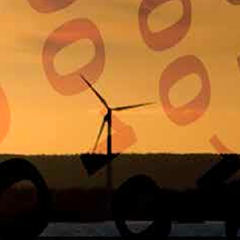IT report: using advanced control and communications to decrease downtime.
“The world faces a once-off transition to sustainability,” says Dr Eddie O’Connor, CEO at Mainstream Renewable Power. “By reducing our dependence on imported fossil fuels and shifting to low carbon sources of power generation, we can grow the economy and lower the price the consumer pays for energy. Innovation in and around clean energy generation will drive economic growth and create long-term manufacturing and service sector jobs.”
Across the globe, with energy supply demands continuing to outpace energy supply, efforts are under way to move to clean, eco-friendly, renewable energy resources such as wind, solar, geothermal and biomass. Of these, wind shows the greatest promise, particularly when wind farms are deployed offshore.
Confirming the potential of offshore wind power, the European Environment Agency (EEA) estimates 80 percent of the projected EU electricity demand could be economically harnessed by 2030.2 Sharing this view, U.K. former Prime U.K. Prime Minister Gordon Brown noted the North Sea may become the Saudi Arabia of wind.
The move away from fossil fuels to renewable energy also requires significant energy grid improvements that increase reliability, bridge long distances, simplify energy trading and create a vast, sustainable energy resource. In Europe, this vision is captured by the concept of an integrated energy infrastructure, called the supergrid, which improves sustainability by allowing utility operators to move energy from places where the wind is blowing to where it is not.
Sustainable energy is predicated on designing reliability and availability into all aspects of the infrastructure, comprising systems generating energy, controlling distribution and finally, consuming energy.
It is crucial to keep the entire energy network, from wind farms to homes and businesses, up and running in order to maintain proper service levels. This paper examines innovative ways to help ensure uninterrupted operation of remote offshore wind turbines through the use of advanced remote management, virtualization and wireless technologies. These approaches can increase turbine availability and reduce the number of required onsite repair visits, which are expensive and hazardous.





























